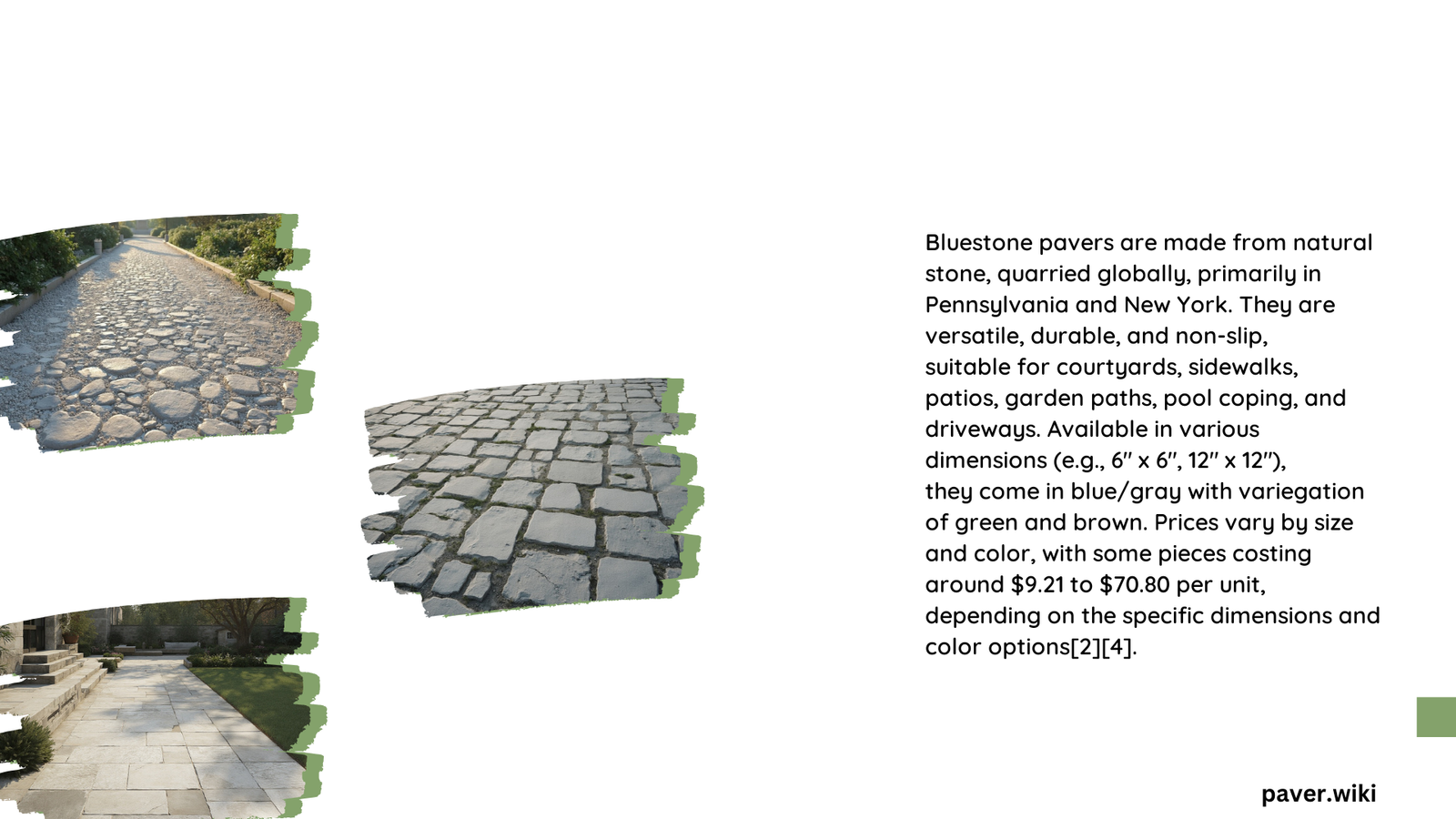Bluestone pavers blocks are natural stone paving materials known for their durability, aesthetic appeal, and versatility in outdoor applications. These blocks, typically sourced from quarries in Pennsylvania and New York, offer a unique blend of beauty and functionality. With their distinctive blue-gray hues and ability to withstand various weather conditions, bluestone pavers blocks have become a popular choice for patios, walkways, and pool decks. This guide explores the specifications, installation process, costs, and maintenance of bluestone pavers blocks to help you make an informed decision for your landscaping project.
What Are the Key Specifications of Bluestone Pavers Blocks?
Bluestone pavers blocks come in various specifications to suit different project requirements. Here are the essential details:
Dimensions
- Thickness: 1/2\” to 3/4\” for standard patterns, up to 1\” for specific applications
- Width and Length: Common sizes include 6\” x 12\”, 12\” x 12\”, with custom cuts available
Weight
- Approximately 170-200 lbs per cubic foot
- For 2\” thick bluestone: 10-12 lbs per square foot
Surface Finishes
- Thermal Finish: Heat-treated for consistent texture and color
- Natural Cleft Finish: Retains the stone’s natural appearance
- Tumbled Finish: Softened edges for a weathered look
How to Install Bluestone Pavers Blocks?

Installing bluestone pavers blocks requires careful preparation and execution. Follow this step-by-step guide:
Required Tools
- Level
- Tamping tool or plate compactor
- Spade or shovel
- Notched trowel
- Jointing sand
- Broom
- Safety gear (gloves, safety glasses)
Installation Process
- Prepare the Base:
- Excavate 4-6 inches deep
- Compact a layer of gravel or crushed stone
-
Add a layer of sand and level
-
Lay the Pavers:
- Start from the center and work outward
-
Use a level to ensure proper placement
-
Fill Joints:
- Spread jointing sand between pavers
- Sweep sand into joints
-
Compact using a plate compactor or tamping tool
-
Optional Sealing:
- Apply a sealant for added protection
Jointing Techniques
- Use sand-based paver sand or polymeric sand
- Compact thoroughly to prevent shifting
Adhesives and Mortars
- For joints: Sand-based paver sand or polymeric sand
- For adhering to concrete base: Type S or N mortar
Drying Times
- Jointing sand: No drying time required
- Mortar: 24-48 hours, depending on conditions
What Is the Average Cost of Bluestone Pavers Blocks?
The cost of bluestone pavers blocks can vary based on several factors:
Price Range
- $10 to $20 per square foot
Factors Affecting Cost
- Regional Variations:
- Proximity to quarries
-
Local market demand
-
Supply Chain Issues:
- Availability
-
Transportation costs
-
Installation Expenses:
- Labor costs
- Additional materials (base, sand, jointing materials)
| Factor | Impact on Cost |
|---|---|
| Location | High |
| Thickness | Moderate |
| Finish | Moderate |
| Installation | High |
How Durable Are Bluestone Pavers Blocks?
Bluestone pavers blocks are known for their durability, but it’s important to understand their strengths and limitations:
Weather Resistance
- Generally resistant to rain, snow, and sunlight
- May be affected by freeze-thaw cycles over time
Load-Bearing Capacity
- Suitable for pedestrian and light vehicular traffic
- Exact capacity depends on thickness and installation quality
Maintenance Requirements
- Cleaning:
- Regular cleaning with mild detergent and water
-
Avoid acidic cleaners
-
Sealing:
- Recommended every 2-5 years
- Frequency depends on exposure and traffic
What Are the Advantages of Using Bluestone Pavers Blocks?
Bluestone pavers blocks offer several benefits for outdoor spaces:
- Aesthetic Appeal:
- Unique blue-gray color
-
Natural variations in tone and texture
-
Versatility:
- Suitable for various applications (patios, walkways, pool decks)
-
Can be cut to custom sizes and shapes
-
Durability:
- Resistant to weathering
-
Long-lasting with proper maintenance
-
Non-Slip Surface:
- Natural cleft finish provides good traction
-
Ideal for pool areas and outdoor spaces
-
Eco-Friendly:
- Natural stone product
- Minimal processing required
How to Choose the Right Bluestone Pavers Blocks for Your Project?
Selecting the appropriate bluestone pavers blocks involves considering several factors:
- Project Type:
- Patio, walkway, pool deck, etc.
-
Consider traffic and usage patterns
-
Climate:
- Assess local weather conditions
-
Choose appropriate thickness for freeze-thaw resistance
-
Aesthetic Preferences:
- Select finish (thermal, natural cleft, tumbled)
-
Consider color variations and patterns
-
Budget:
- Balance cost with quality and durability
-
Factor in long-term maintenance expenses
-
Installation Method:
- Dry-laid or mortared installation
- Consider professional installation for complex projects
By carefully evaluating these factors, you can choose bluestone pavers blocks that best suit your specific project needs and preferences.
